How to plant and grow bulbs, corms and tubers
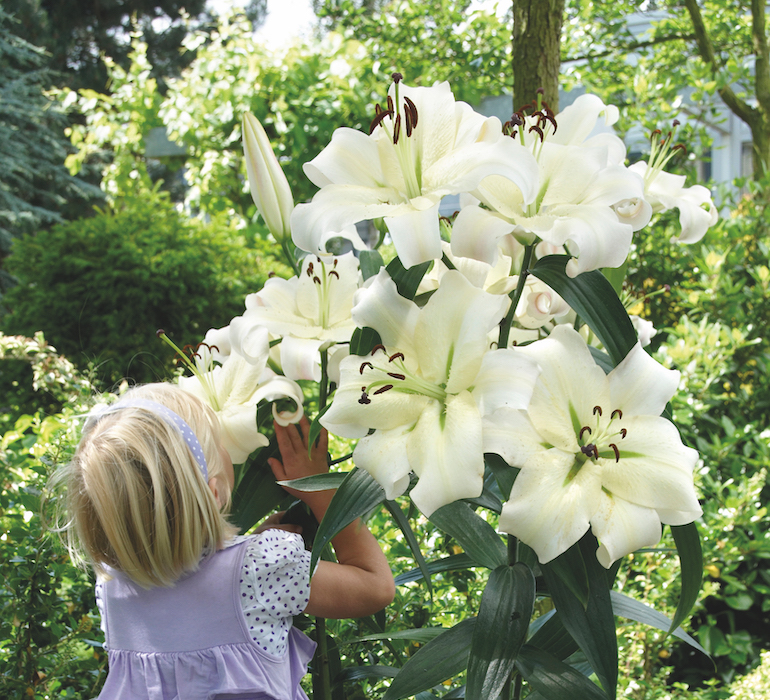
Watch as Lily 'Pretty Woman' produces up to 30 blooms a year from one bulb!
©Visions BV, Netherlands. Collection by - West End bulb Export b.v
Planting flower bulbs, corms and tubers is an easy way to ensure a colourful display in your garden, particularly in spring before the rest of the garden has woken from its winter dormancy. Bulbs can be planted in containers or borders, and look particularly effective when naturalised in grass.
If you’re wondering how deep to plant daffodil bulbs, which way up to plant begonia tubers or when to plant tulips, we’ve got you covered. Remember to browse our full collection of bulbs, corms and tubers for new and exciting varieties.
What soil do bulbs prefer?
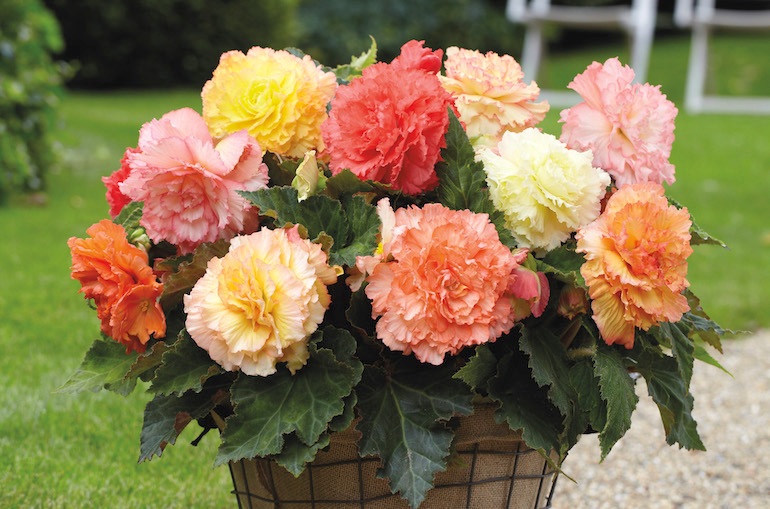
Begonias produce sensational seasonal displays ideal for patio containers
Image: Begonia x tuberhybrida 'Giant Picotee Mixed' Thompson & Morgan
Different species require different growing conditions, and you can check their preferred position in our bulb planting depth chart below. As a general rule, plant your bulbs in well drained soil. Those sitting in waterlogged soil will rot.
How to store bulbs before planting
For the best results, plant your bulbs as soon as you receive them. If poor weather prevents this, you can store them temporarily for around 2-3 weeks. Keep them in a dry, dark, and cold location, ensuring it remains frost-free. Remove the bulbs from their packaging and arrange them on trays with enough space between each bulb to allow for proper airflow. Alternatively, place them in a cardboard box, using scrunched newspaper to separate them. A cool cupboard, garden shed, or garage works well for short-term storage. Be sure to check on them regularly, as longer storage may cause the bulbs to deteriorate.
Which way up should bulbs be planted?
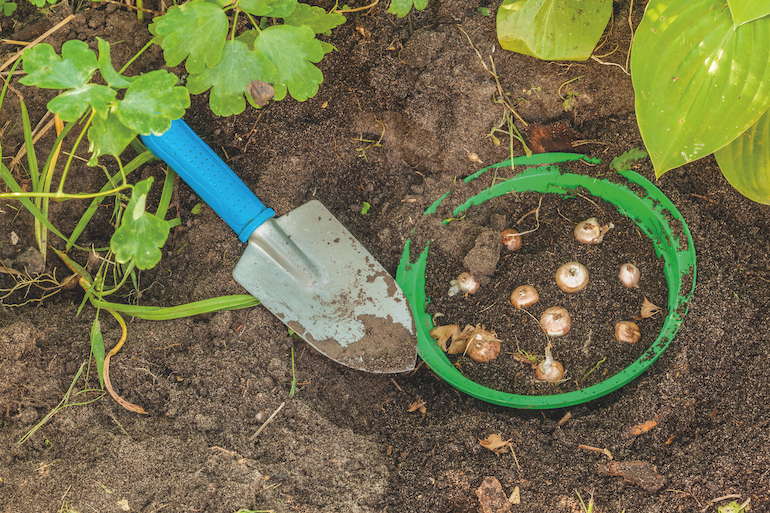
Using a bulb basket for easy planting and lifting
Image: Bulb baskets from Thompson & Morgan
Always plant bulbs with the pointed growing tip facing upwards. If it isn't clear which is the top, then try planting bulbs on their side. Some tuberous plants such as begonias will be flatter than bulbs and don't have an obvious growing point. Position them just below the compost surface with the indented side facing upwards.
Growing bulbs in containers
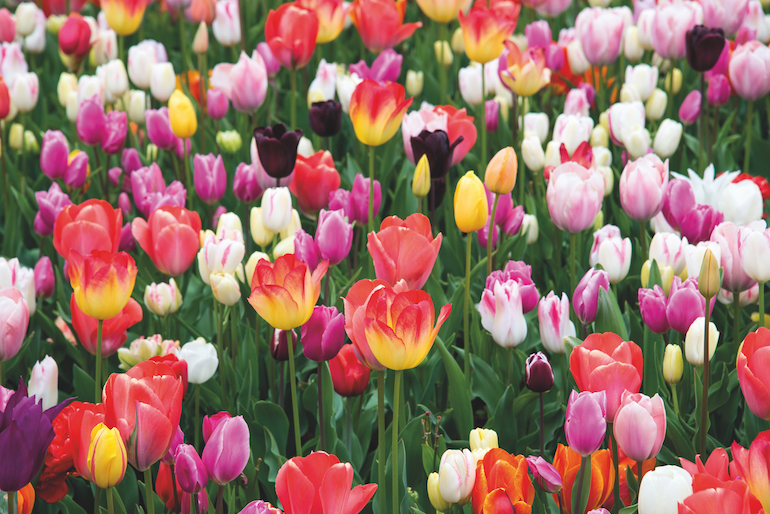
Plant spring bulbs in swathes for a gorgeous sea of colour
Image: Tulip 'Full Border Mix' from Thompson & Morgan
Planting bulbs in containers allows you to move your display into prime position while they’re in full bloom. After flowering, the containers can be moved out of view while the bulbs die back and become dormant. Use a good quality general purpose compost and mix in a handful of fine grit to improve drainage. Alternatively, you can choose specially prepared bulb compost.
Water bulbs in containers regularly as they begin to grow, and continue throughout their flowering period. Once the foliage begins to die back you can gradually reduce watering as they enter their dormant period.
If squirrels and mice become a problem, protect your containers of bulbs by covering the top of the pot with a piece of chicken wire. Once the shoots appear you can remove it to give the foliage and flowers space to grow.
How to plant bulbs in grass
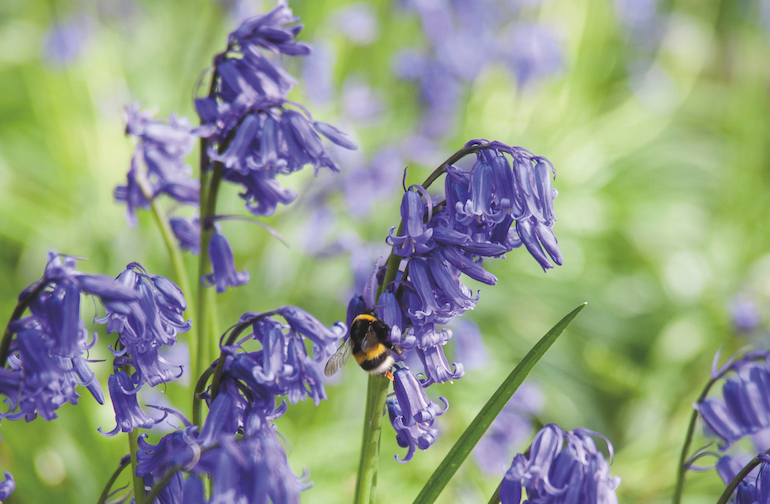
Plant English bluebells in your lawn to create a pollinator-friendly zone
Image: English Bluebells from Thompson & Morgan
Naturalising bulbs in your lawn can create an impressive display. They’re best grown informally in grass that can be left unmown until the bulb foliage dies back.
For a really natural look, gently scatter them across the planting area and bury each one where it lands. Use a sturdy trowel or bulb planter to dig a hole to the recommended planting depth and drop the bulb in, making sure that it’s facing the right way up. Cover the bulb with soil and gently firm the earth around the bulbs to fill any pockets of air. Avoid treading the ground afterwards as this may damage the bulb growing tips as the soil settles.
If you’re planting large numbers of bulbs then it may be simpler to lift an entire piece of turf with a spade and arrange the bulbs beneath before replacing it.
Planting depths for bulbs and tubers
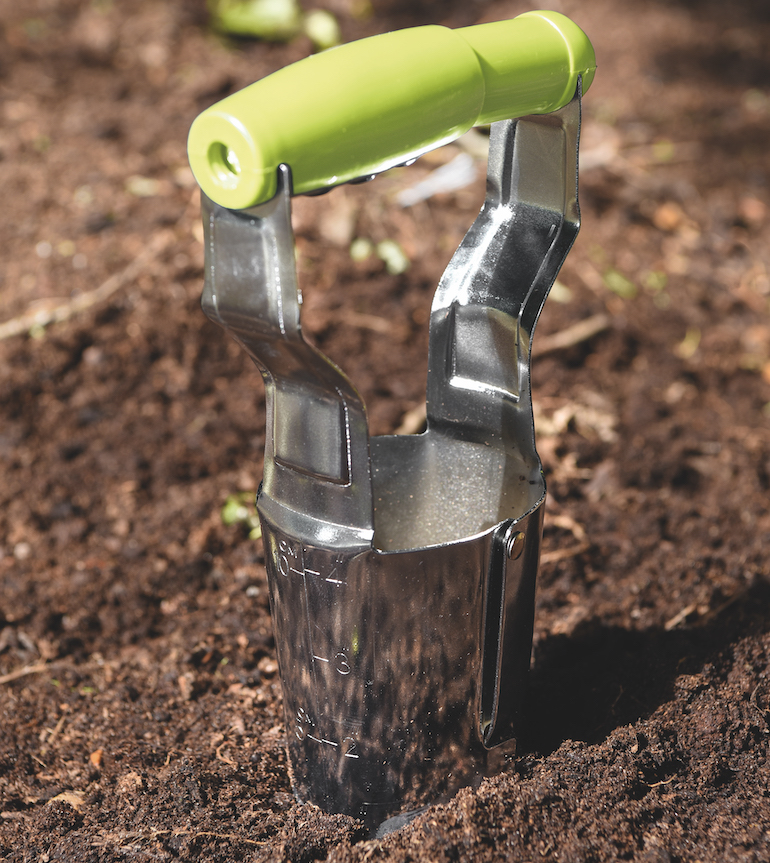
Easily insert bulbs into the soil at the right depth with a bulb planter
Image: Bulb Planter from Thompson & Morgan
Bulb planting depths vary depending on their size and species; but as a rule of thumb, most bulbs can be planted at a depth of approximately 3 times their own height. There are a couple of exceptions to this – cyclamen and begonia tubers should be planted just at the soil surface and, in the case of begonias, you should start them off in pots indoors. Full growing instructions can be found on individual product pages.
| Bulb/Tuber | When to plant bulbs | Bulb Planting depths | Planting distance between bulbs | Position |
|---|---|---|---|---|
| Allium bulbs | Autumn | 10cm (4") | 10cm (4") | Full sun |
| Begonia tubers | Spring | 1cm (1/2") | 30cm (12") | Full sun, semi shade, dappled shade |
| Crocus bulbs | Autumn | 10cm (4") | 7cm (3") | Full sun, semi shade |
| Daffodil bulbs | Autumn | 10cm (4") | 10cm (4") | Full sun, semi shade |
| Dahlia tubers | Spring | 15cm (6") | 45cm (18") | Full sun |
| Bluebell bulbs | Spring/Autumn | 10cm (4") | 10cm (4") | Dappled shade |
| Gladiolus corms | Spring | 10cm (4") | 15cm (6") | Full sun |
| Hyacinth bulbs | Autumn | 10cm (4") | 8cm (3") | Full sun, semi shade |
| Iris reticulata bulbs | Autumn | 10cm (4") | 8cm (3") | Full sun |
| Lily bulbs | Autumn | 20cm (8") | 15cm (6") | Full sun, semi shade |
| Narcissus bulbs | Autumn | 10cm (4") | 10cm (4") | Full sun, semi shade |
| Ponerorchis tubers | Spring | 2.5cm (1") | 7cm (3") | Dappled shade |
| Ranunculus corms | Autumn | 8cm (3") | 25cm (10") | Full sun |
| Snowdrop bulbs | Spring/Autumn | 10cm (4") | 10cm (4") | Dappled shade |
| Tree lily bulbs | Autumn | 20cm (8") | 15cm (6") | Full sun, semi shade |
| Tulip bulbs | Autumn | 15cm (6") | 13cm (5") | Full sun |
| White Egret Orchid tubers | Spring | 2.5cm (1") | 7cm (3") | Dappled shade |
| Winter Aconite bulbs | Autumn | 5cm (2") | 5cm (2") | Full sun, semi shade, dappled shade |
Video guide to growing bulbs
Find all you need to know about growing spectacular spring flowering bulbs, whether indoors or out in the garden, over at our spring flowering bulb hub page.
Sign Up For Exclusive Special Offers




© 2024 Thompson & Morgan. All rights reserved. A division of Branded Garden Products Limited.
Sign up for exclusive offers!



